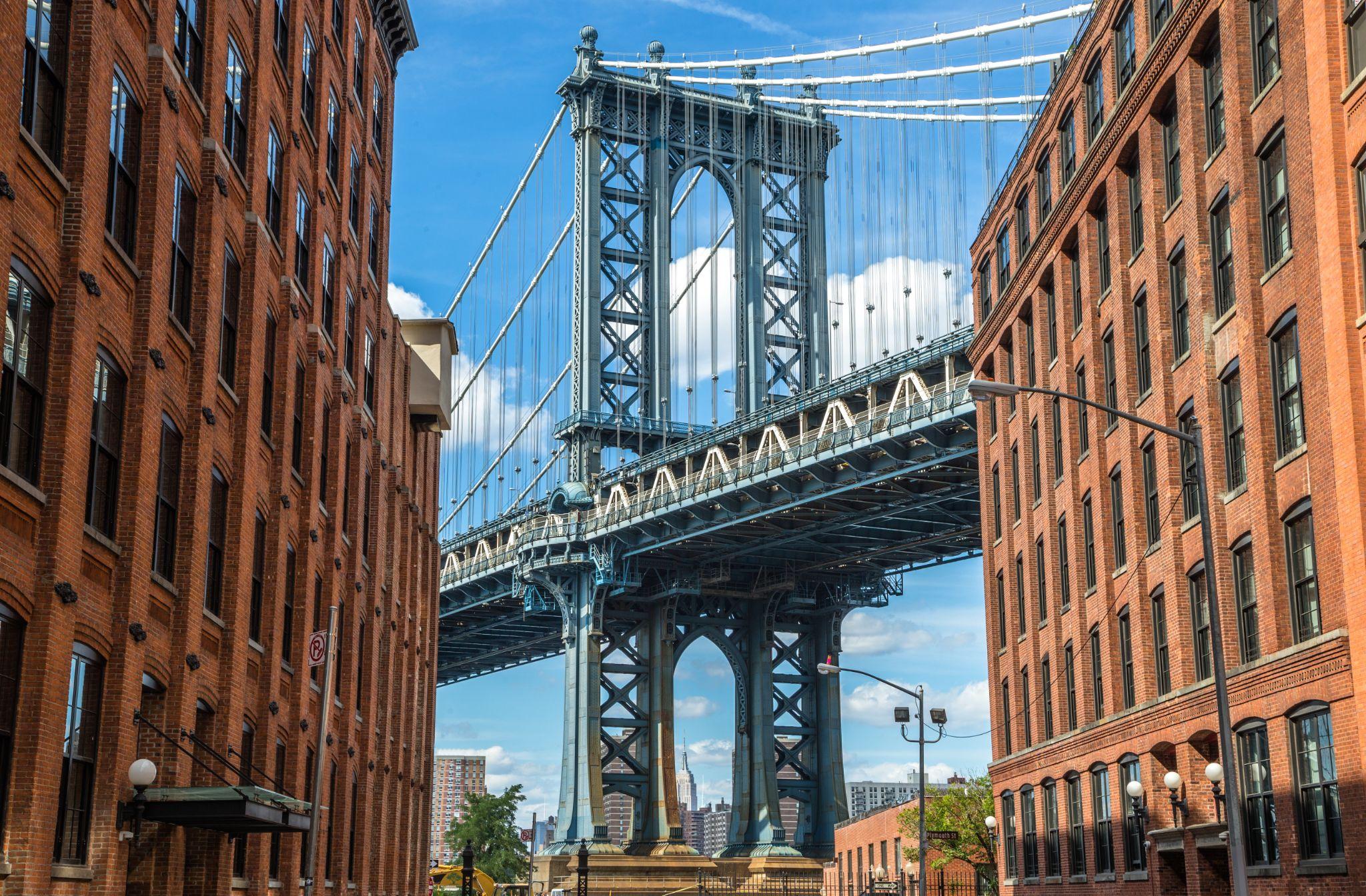Are you considering moving to the city that never sleeps, where dreams are made, and opportunities abound? Welcome to the vibrant and dynamic metropolis known as New York City. It’s the most populous city in the U.S., and for many locals, it’s the greatest city in the world, bar none.
New York City’s demographic makeup is a testament to its cultural richness. Over three million of NYC’s residents are foreign-born, hailing from more than 200 countries.1 Literally hundreds of languages are spoken throughout the city, making it one of the most linguistically diverse places on the planet.
Before taking the plunge into this urban wonderland, it’s essential to be well informed about the factors that can shape your life as a New Yorker. From navigating the competitive rental market and getting around the city’s extensive transportation network to adapting to the diverse weather patterns, there’s much to consider before you embark on your journey.
Renting
Renting an apartment in New York City can be a significant financial challenge due to the city’s high cost of living. The rental market is competitive, and prospective tenants often face steep prices, especially in popular neighborhoods like Manhattan. Finding the right place can take a few weeks or even months. It’s definitely best to have a job lined up in NYC before you move here, or have enough money to protect yourself from financial stress as you look to get properly situated.
According to recent data, the average monthly rent for a one-bedroom apartment in New York City (across all boroughs) is $3,995.2 Larger apartments with two or three bedrooms can command even higher prices, reaching upwards of $5,000 to $7,000 per month or more. New Yorkers typically spend nearly one-third of their income just on rent.3
In most cases, you will also have to pay a broker’s fee—essentially a finder’s fee—upfront. The fee is calculated as up to 15% of your first year’s rent. Although it’s possible to find an apartment that doesn’t come with a broker’s fee, it isn’t easy, and the fee tends to be accepted as one of the standard expenses involved with moving into a new apartment in NYC. By the way, this fee is in addition to the security deposit and first/last month’s rent generally required by landlords. (If it wasn’t clear by now, living in NYC isn’t cheap.)
To cope with the high cost of renting, many New Yorkers settle for shared living arrangements or seek housing in the outer boroughs (i.e., all the boroughs that aren’t Manhattan), where rent tends to be more affordable.
Before you sign the papers to rent an apartment, always take the time to tour the premises. Don’t rely solely on the stock photos you’re shown—they could be misleading. Not only should you check out in person the unit you want to rent, you should also take the time to explore the neighborhood you’ll be living in.
Transportation

In New York City, transportation options abound, enabling residents and visitors to navigate the city efficiently. The most prominent mode of transportation is the iconic subway system, operated by the Metropolitan Transportation Authority (MTA). The subway serves as the backbone of New York City’s public transportation, covering a vast network of routes that connect all five boroughs.
With an average weekday ridership of over 5 million, the subway remains the go-to choice for many New Yorkers. If you plan to join them, you should get a MetroCard subway pass or an OMNY card.
In addition to the subway, the city boasts an extensive bus network, offering even greater accessibility to various neighborhoods and areas not directly served by the subway.
Considering the robust public transportation network and the rise of ride-sharing services, it is not necessary to own a car in New York City. In fact, many long-time locals say that owning a car is more of a hassle than a convenience, as it involves high costs for parking (seldom a simple matter in NYC), insurance, and maintenance. Furthermore, the city’s notorious traffic congestion can make driving a car a time-consuming and stressful experience.
This phenomenon helps to explain why only around 45% of households in New York City own a car, which is much lower than the national average. But it’s worth pointing out that car ownership rates vary among the different boroughs: Manhattan has the lowest rate in NYC (22%) while Staten Island has the highest (83%).4
With plenty of transportation options to choose from, New Yorkers often do without car ownership and embrace the convenience and efficiency of public transit and ride-sharing. It’s a good idea to invest in durable, comfortable footwear, because you’ll probably spend a lot of time walking on pavement.
City Blocks
New York’s street layout is a mix of avenues and streets forming a patchwork of city blocks. You should become familiar with this unique system before you move.
Most of Manhattan, the city’s central borough, is organized into a rectangular grid of streets and avenues. The avenues run north to south, while the streets run east to west. This system makes navigation relatively straightforward, and addresses are often referenced using the street and avenue names.
The typical city block in Manhattan is about 200 feet (61 meters) long on the avenues and 600 feet (183 meters) long on the streets. This standard size tends to make it easier to measure distances and estimate walking times between destinations in the Big Apple.
However, the street layout in the outer boroughs can be more irregular compared to the highly structured grid of Manhattan. Many neighborhoods in the outer boroughs were developed before being incorporated into the city, leading to a mix of street patterns.
Weather
New York City has a diverse climate with distinct seasonal variations. Understanding the weather patterns is important to enjoy the city’s offerings fully. This is another way of saying that you need to have the right clothing for the various weather conditions in NYC.
- Winters in New York City are cold and can be quite harsh. The average temperature in January, the coldest month, hovers around 32°F (0°C). Snowfall is common, with an average of about 25 inches (64 cm) annually.
- Spring brings a welcome change as temperatures begin to rise, with an average of 60°F (15°C) in April. However, the season is known for its variability, with unpredictable weather.
- Summer in the city is characterized by hot and humid conditions. July, the warmest month, sees average temperatures of around 76°F (24°C), but heat waves can push temperatures to 90°F (30°C) and higher. Humidity can make living in New York City even hotter.
- Fall is a beloved season in New York City, with mild temperatures and pleasant weather. September boasts an average temperature of around 70°F (21°C), making it an ideal time to explore the city’s parks and outdoor spaces.
Don’t forget about the rain: New York City receives an average annual rainfall of about 46 inches (approx. 116.8 centimeters).5 This rainfall is distributed throughout the year, with precipitation occurring in varying amounts during each season. Spring and summer tend to be wetter months, while fall and winter typically see relatively lower rainfall amounts. Along with footwear, a reliable umbrella is a wise investment.
Making the Move

When moving to NYC, using a “white glove” moving service is very important. This is a specialized type of moving service that offers an elevated level of care and attention to detail during the relocation process.
In a crowded city like New York, you need specialized movers who understand how to maneuver furniture and other belongings through narrow hallways and staircases, and ensure the safe handling of valuable items and delicate possessions. Moreover, a white glove service can assist with unpacking and setting up your new home, saving you time and effort in settling into your new space.
Samba Moving’s white glove service allows you to embark on your New York City journey with peace of mind, knowing that your belongings are in capable hands.
Offering full-service packing and unpacking, we’ll manage your property at every stage of the process. Even interstate and long-distance moves are no problem for us. We also provide short- and long-term (more than three months) storage in NYC if you’re not certain you can get all your belongings into your new residence.
Unlock the secrets of thriving in the concrete jungle and embark on your journey to conquer New York City like a true local! Based in the Bronx, Samba Moving is licensed, insured, and bonded. If you need more information on our moving services, just call us at (212) 756-1263.
Sources
- https://www.nyc.gov/site/planning/data-maps/nyc-population/population-facts.page
- https://www.zumper.com/rent-research/new-york-ny
- https://www.amny.com/news/new-york-city-rent-report-hire-a-helper/
- https://edc.nyc/article/new-yorkers-and-their-cars
- https://pix11.com/news/local-news/is-it-going-to-snow-in-nyc-this-winter/

